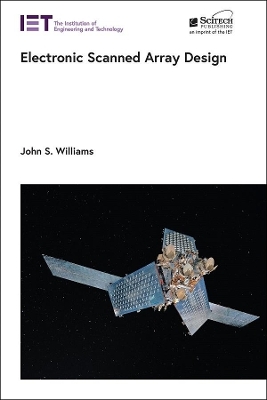
Electronic Scanned Array Design
Institution of Engineering and Technology (Verlag)
978-1-78561-929-8 (ISBN)
Electronic Scanned Array Design covers the fundamental principles of ESA antennas including basic design approaches and inherent design limitations. These insights enable better appreciation of existing and planned ESA systems including their application to earth observation. The material describes general design principles of aperture antennas applied to the specific case of ESA design.
System applications are discussed to set the framework for requirements allocation and flowdown. Specific examples are cited throughout to relate theory to practice. The book begins by introducing the concept of electronic scanned arrays, giving a brief history of the technology and outlining its scope and applications. Further chapters cover antenna principles; synthetic arrays; antenna figures of merit; mutual coupling effects; errors and tolerances; grating lobes; thinned arrays; beam width and sidelobes; beam shaping and spoiling; reflector applications; design practice; radiating elements; T/R modules; assembly, packaging, power and thermal management; technology base and cost; and ESAs in space. The final chapter offers a comparison between an ESA and a reflector, exploring their benefits, detriments and design trades.
The book will be invaluable for radar and antenna engineers and researchers, and advanced students studying ESA design.
John S. Williams received his bachelor's and master's degrees in physics from Caltech and the University of California at Irvine respectively and is a Senior Member of the IEEE. He worked on a variety of ESAs since 1980 at Hughes Aircraft Corporation, Raytheon and The Aerospace Corporation. He managed T/R module development, ESA demonstration and manufacturing technology programs. He is now retired.
Chapter 1: Introduction
Chapter 2: Antenna principles
Chapter 3: Synthetic arrays
Chapter 4: Antenna figures of merit
Chapter 5: Mutual coupling effects
Chapter 6: Errors and tolerances
Chapter 7: Grating lobes
Chapter 8: Thinned arrays
Chapter 9: Beamwidth and sidelobes
Chapter 10: Beam shaping and spoiling
Chapter 11: Reflector applications
Chapter 12: Design practice
Chapter 13: Radiating elements
Chapter 14: T/R modules
Chapter 15: Assembly, packaging, power, and thermal management
Chapter 16: Technology base and cost
Chapter 17: ESAs in space
Chapter 18: ESA and reflector comparison
Appendix A: Further reading
Appendix B: Comments on MATLAB® code
Appendix C: Geometry
| Erscheinungsdatum | 08.02.2021 |
|---|---|
| Reihe/Serie | Radar, Sonar and Navigation |
| Verlagsort | Stevenage |
| Sprache | englisch |
| Maße | 156 x 234 mm |
| Themenwelt | Technik ► Nachrichtentechnik |
| ISBN-10 | 1-78561-929-2 / 1785619292 |
| ISBN-13 | 978-1-78561-929-8 / 9781785619298 |
| Zustand | Neuware |
| Haben Sie eine Frage zum Produkt? |
aus dem Bereich


